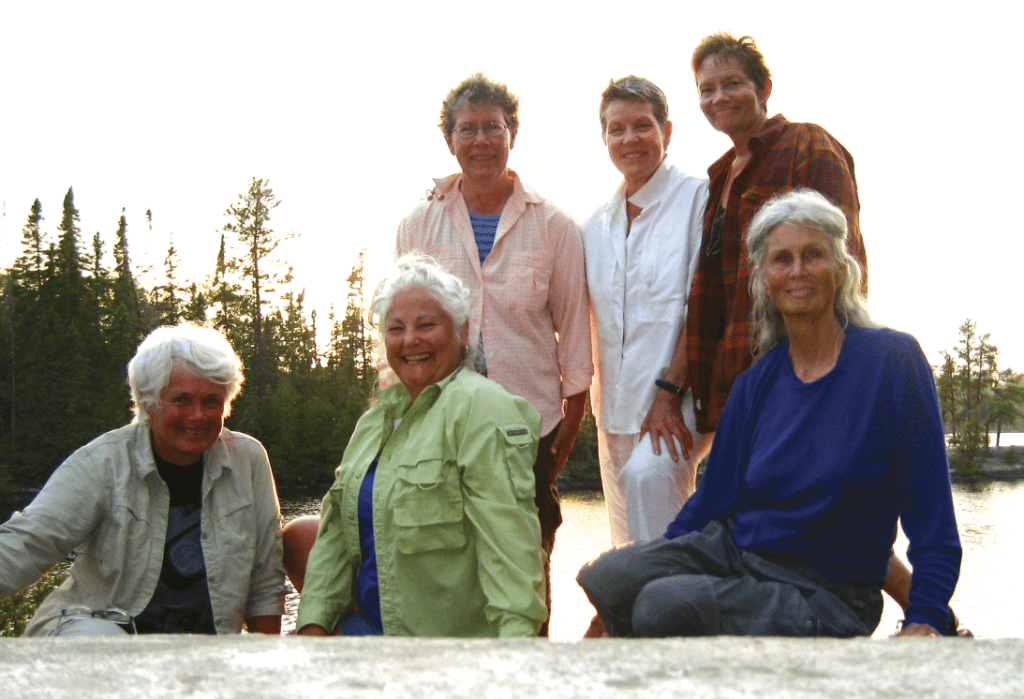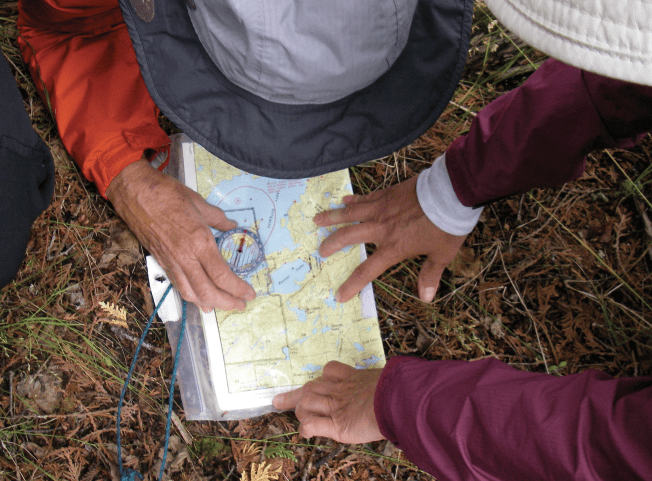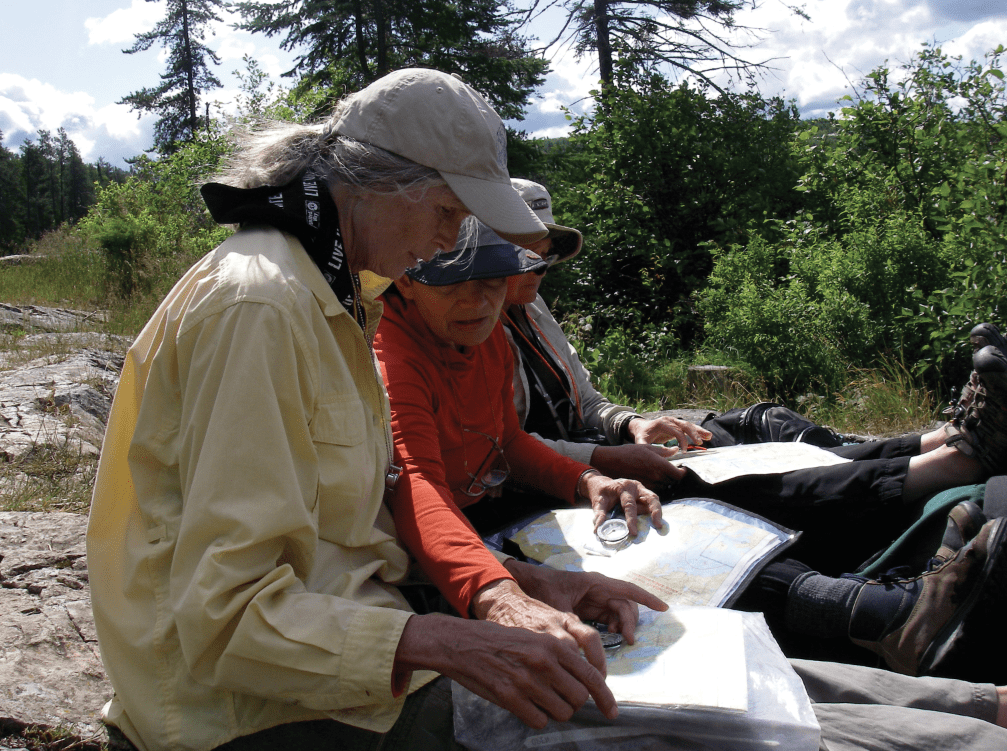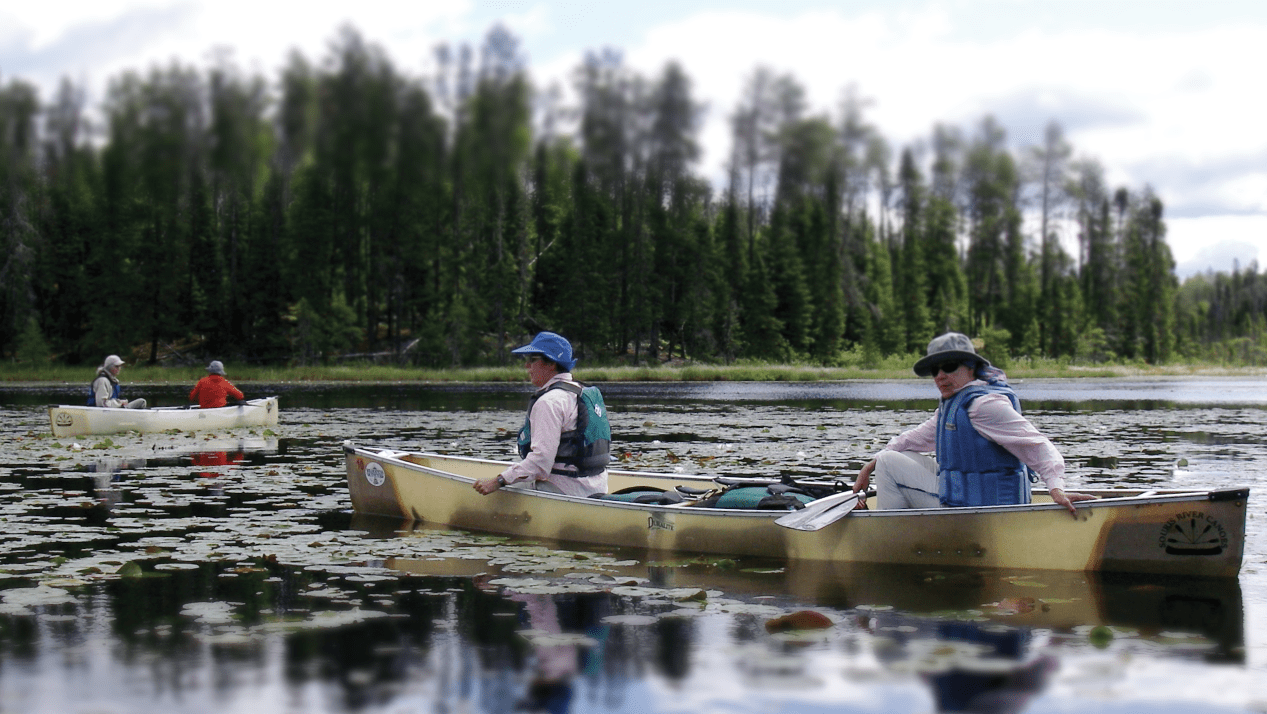
“We can do it. We can do it without a guide.”
By Rob Kesselring Wilderness News Contributor
It started with a dare in 1986. Seven female volunteers at a nature center thirty miles northwest of Milwaukee were contemplating signing up for a guided BWCAW trip. And then one said, “We don’t need to sign up for a sponsored Boundary Waters trip, we women can do it ourselves!” That first step was the beginning of a quarter century of wilderness adventure.
They were not beginners to camping, a few had even been to the Boundary Waters before, but this time it was different. This time they were in control. The result was so empowering that it became an annual ritual. Not every woman in the group has made the journey every year but two have, and a few more have just missed a couple trips.
It is tempting at this stage in the article to identify and describe the paddlers, but their story is not unique. Every year more and more groups of women ply the BWCAW on their own. By keeping the members of this group almost nameless, the adventures, motivations and excitement of these women may seamlessly weave together with other women that have discovered a similar exquisite blend of solace and camaraderie in the Quetico-Superior wilderness.
There is never a leader. All decisions are made by consensus and that is the way it has always been. Even when a stubborn bear refused to vacate their campsite the women took the time to share their feelings and agree, before they made a hasty retreat across the lake.

These hardy women also share in the excitement of exploration. Not content to merely camp on the periphery of the wilderness. Their travels include portages over a mile, white-capped lake crossings and complicated routes deep into the Boundary Waters. To this day, they navigate only with compass and map. In twenty-five years of travels their routes have crisscrossed and they do have a few favorite campsites and cherished swimming holes, but every year it has been a different route and a fresh adventure.
They value the little things: the fragrances of tiny flowers, the touch of granite and the antics of songbirds, which they have learned to identify by call and habitat. They also revel in the big sky, prolonged summer sunsets and the thrill of a thunderstorm pounding across a wilderness lake.
Carrying packs and canoes past a group of men half their age the women stand a little taller and laugh their way over the boggy trails. Simplicity is another theme and the group has learned that less is more. Their dinners are one-pot affairs and they discovered, in year two, that if you were discreet, even swimsuits were unnecessary. A few years ago when one new paddler pulled a beach towel from her Duluth Pack, she was teased and told in no uncertain terms that a bandana is the only towel you need in the wilderness.
Barbara Gilmore, one of the seven women who have never missed a year, shared that many years ago the group even quit bringing fishing gear. As much as they enjoyed a fish dinner, the pursuit of fish with all the paraphernalia and hassles was more bother than it was worth and stole time from what was paramount to their wilderness experience. Although there are women who enjoy fishing, this group’s attitude about fishing may resonate with many female voyageurs. Smiles of mirth appear on their faces as they pass groups of men encumbered with tackle boxes and rod cases and as they overhear the men complain about poor fishing or boast about the size or quantity of their daily catch. Karen Kelley, another avid BWCAW canoeist, put it this way; “Women tend to do a lot of things for others, and are conditioned to always place others’ needs in front of their own. When we get away, we are freed of this role, and it gives us more space to think about who WE are, what WE think, and what WE want. The last thing we want to do is muck up this freedom by competing with each other over something as silly as a fish.”

This does not mean women go into the wilderness afraid to step out of their comfort zones, quite the contrary. Many of this group’s trips over the past 25 years have included arduous routes and tough portages frequently shunned by all but the most seasoned canoeists. Leaving civilization behind is a big part of the journey. This freedom keeps surfacing as a theme that draws the women back again and again to the land beyond the road and beyond the trappings of material civilization and the constraints of cultural stereotypes. They feel free to try new things and make mistakes without having it “count” too much. For example, the women delight in knowing that no one is going to yell at them or be disappointed if you are not the greatest stern paddler right out of the box. They are going to let you learn by doing and laugh with you at your mistakes. And no one is going to push you out of the way and just do it themselves.

These paddling partners have come to treasure their time together in the wilderness. The connection with nature and the separation from home life and societal expectations enables them to connect with each other on a deep level. When asked about the complexity of planning and packing for a week alone in the wilderness the women laugh. Accustomed to the bottomless list of support roles women take on in modern life they find wilderness living extremely liberating. Their passion for skinny-dipping is a metaphor for that freedom. On a more serious level, not shouldering the expectation that they need to take care of countless others is very freeing. They can be the “big thinkers” because they are not tied down to the responsibility of minding all the myriad details. In the spirit of this freedom and candor, defenses are left at the put-in point and these annual adventures have become opportunities for essential conversations about family, love and the wisdom that is gleaned from life’s hardships and triumphs.
This past August “the trip” began at Sawbill Lake. Twenty-five years had passed since that first declaration that “we can do it.” and “we can do it without a guide.” The oldest paddler was now 69, the youngest 57. With new words to an old tune they paddled up Sawbill Lake in unison, singing their own song.
I walk the shores of Sawbill Lake and hear her music ringing.
It sounds an echo in my soul. How can I keep from singing?
We paddle strong in rain and snow, through Sawbill’s waters, shimmering.
Then worn with toil, we heed her call: How can we keep from swimming?
The moonlight shines across the lake; we hear the loons’ night singing.
Our supper’s done, the food bag’s hung…How can we keep from swimming?
Friendships renewed, cares float away, our hearts with joy are brimming.
Past years: this year; years to come…How can we keep from swimming?
Rob Kesselring’s books: River Stories and Daughter, Father, Canoe, Coming of Age in the Sub-Arctic, are available at www.shopcanoeing.com

